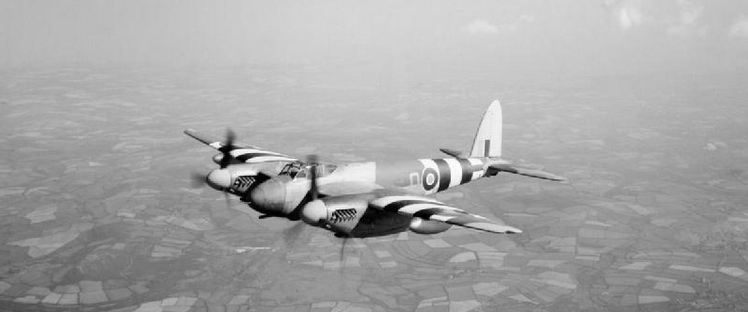From an article by John Larder in Issue 2 of Everyone’s War
Probably no other plane served successfully in so many roles as the “Mossie”.
It was a highly successful fighter at night (particularly in the hands of John Cunningham ). It had the speed to catch and shoot down V1‘s. It could carry 4,000 lbs of bombs to Berlin. It was an important Photo Reconnaissance plane. It was used extensively by the Pathfinders for marking. It was used as a high speed passenger transport. It could deliver a devastating blow, in its “Tsetse” form, to a U-boat. It carried out very accurate target marking in support of the Heavy Bomber Stream. It was effective as a daylight intruder and for precision bombing of vital strategic targets. It also brought coastal shipping to a halt in Norwegian waters towards the end of the war. It served throughout Europe and after initial problems served successfully in the Far East.
The Mosquito aircraft was the idea of the De Havilland Company which had developed the “Comet” racer before the war. This was twin-engined and constructed of wood. As is often the case the plane didn’t fit the roles the Air Ministry had in mind and it was De Havilland’s perseverance which gave the Royal Air Force this versatile plane. It was generally loved by its crews for its speed and manoeuverability.
The commanders who were more open-minded such as Embry, Conyngham, Bennett, Cochrane and Tedder, appreciated the possibilities of the plane and exploited them.
Finally, even the more conventional minds saw the advantage of a plane built of wood which could utilise the woodworking capacity of British industry. It was easy to repair in comparison with many other planes and in its many forms it could be well armed culminating in the “Tsetse” with its huge stopping power.
There is one great question about the plane. Given its brilliant capabilities why wasn’t it exploited more in place of the “heavies”?
There is little doubt that losses would have been hugely reduced if the Mosquito had been more extensively used. It is probable that greater precision could have been achieved. It didn’t have the range of a Lancaster or its bombload but in many areas it could have replaced the heavy bomber. The supply of pilots could have been a factor and perhaps the best utilisation of the aircraft industry’s capacity was in supporting the “heavies”. Whatever the reason, that is now in the realm of history, but we should remain thankful for the men who built, flew, maintained and directed this magnificent plane to such great effect in the last world war.


